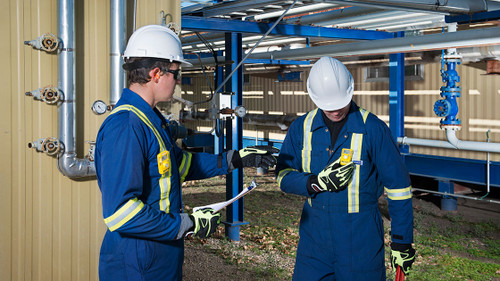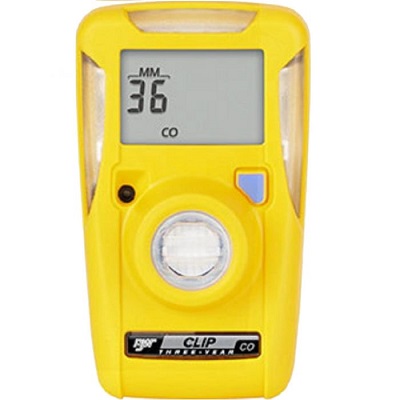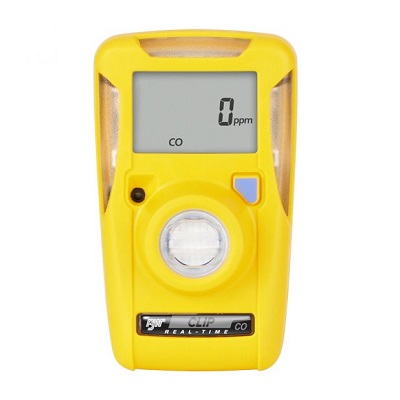What to Know About The Dangers of Carbon Monoxide
Carbon Monoxide (CO) is a dangerous toxic gas that is undetectable by people because it is colorless, odorless and tasteless. Did you know that every year about 430 people die in the U. S. from accidental Carbon Monoxide poisoning? Recently, police officers were poisoned by CO from a carbon monoxide leak in their vehicles, reported by FOX 25 News. Four officers driving modified Ford Explorers tested positive for carbon monoxide; one even passed out behind the wheel and caused an accident. “Safety is our top priority and we are concerned for those involved. We are investigating, but until we have the facts, it would be inappropriate to comment further," said Elizabeth Wingrandt, the Safety Communications Manager for Ford. Meanwhile, as a precautionary measure, some Police Departments added CO detectors to their Required Equipment list. However, some officers expressed their concern about having to carry gas monitors in addition to a lot of other equipment that they have to use daily. They think Ford has to fix the problem with the vehicle instead.
Here’s what one of our customers has said about using one of our CO gas monitors: “With a current manufacturer defect for carbon monoxide leaks in our Ford police vehicles, these lightweight, small, and portable detection devices have literally been life-saving. They have alerted us to carbon monoxide leaks in multiple vehicles which have saved lives.”
How Is Carbon Monoxide Produced?
Incomplete combustion is the main reason why CO is released. Fossil fuels contain carbon and hydrogen, which combine with oxygen during complete combustion and produce carbon dioxide and water. During incomplete combustion part of the carbon is not fully oxidized which creates carbon monoxide. Some of the reasons of incomplete combustion include the insufficient mix of air and fuel or insufficient time to burn.
All gas-powered appliances and vehicles give off some amount of carbon monoxide. CO poisoning occurs when people have been exposed to the high levels of this gas for a short time, or to the low levels of CO for a prolonged period of time. According to the EPA (Environmental Protection Agency), varying levels of CO in the atmosphere can cause different health problems:
- From 0.5 ppm to 5 ppm – does not affect your health, as it is a normal range of CO for environments and buildings without gas appliances.
- Less than 70 ppm – no health damages were observed if exposed for a short time. More than six-hours of exposure will cause headaches and dizziness.
- Around 100 ppm – will give you a headache after two hours of exposure.
- From 150 ppm to 200 ppm – the exposure at these levels causes disorientation, unconsciousness, and even death.
It is important to know that long exposure to low levels of CO is as harmful as short exposure to high levels of this gas, because Carbon Monoxide easily bonds with red blood cells, and prevents them from absorbing oxygen, which is extremely dangerous for people’s health.
Top Carbon Monoxide (CO) Detectors
Digital, fast-responding, portable CO detectors are a great choice for on-the-go applications, as they respond to low levels of CO in seconds, compared to residential alarms. Portable CO detectors are mostly used for professional applications in oil and gas, automobile industries, construction and in confined spaces.
The BW Clip Series CO Detector is a great example of a high-performance CO gas monitoring systems.
Key Benefits of BW Clip Detectors:
- Maintenance-free: does not require battery and sensor replacement
- Compact: one-button operation
- Hibernatable, with a hibernation case accessory
- Compatible with the Micro-Dock II and the IntelliDoX instrument management systems
- Automated self-test of battery, sensor, and electronics
- Activated detectors automatically perform 1 internal diagnostic test every 24 hours
- Provides wide-angle flash alerts with an audible and a vibrating alarm
- Automatic logging of the 35 most recent gas events, bump test, and calibration results
- Can be used with the hands-free Hard Hat Clip carrying accessory
Depending on your application, you can choose from two types of BW Clip Series monitors: standard or real time.
The BW Clip Standard Monitor does not display readings at any time. It is a compliance detector, with alarm points set to alert users when preset limits are reached. These are OSHA default alarm settings. The advantage of this type of monitor is that no calibration is required for the life of the unit.
If seeing the actual gas level is important to you and your company, we recommend other instruments. For instance, the BW GasAlert Extreme CO monitor will show a constant digital readout. You will need to calibrate the unit at least every 180 days to maintain accuracy.
Here are two additional great CO monitors available:
Standard: BW CLIP 3 YEAR CO SINGLE GAS DETECTOR BWC3-M
This option is more affordable than real-time monitors. The standard BW Clip detector provides visual and audible alarms warning the user immediately when CO levels in the environment become dangerous.
Real Time: BW CLIP 3 YEAR CO DETECTOR 35-200 PPM BWC3R-M
Designed for a wide range of harsh environments and extreme temperatures, the BW Clip Real Time Detector ensures and displays on the screen continuous real time measuring of CO levels. It features the updated Firmware and includes a real-time gas level display, the ability to calibrate the device, as well as a user-settable calibration reminder. It is a perfect gas monitoring device for the first response, confined space entry, hazmat, oil and gas, public safety, industrial and environmental uses.
Are you ready for real-time gas detection? Give us a call at 800-829-9580, or visit us online pksafety.com/.
Sources:
- Data Sheet
- Carbon Monoxide Poisoning
- Carbon Monoxide Safety Outreach Materials
- Carbon Monoxide (CO) Poisoning Prevention
- Carbon Monoxide Poisoning: Checking for Complete Combustion
- Carbon Monoxide Detector Requirements
- Boston 25 NEWS
Recent Posts
-
ANSI/ISEA 138 Safety Gloves: Ensuring Hand Protection
The human hand is an anatomical masterpiece and arguably the greatest tool attached to our bodies …Jun 25th 2024 -
June 2024: National Safety Month
June is recognized as National Safety Awareness Month and focuses to help "keep each other safe f …Jun 4th 2024 -
10 Ways to Prevent Wildfires
You can prevent wildfires by extinguishing flames before you leave the worksite. Avoid practicing …Jun 3rd 2024







